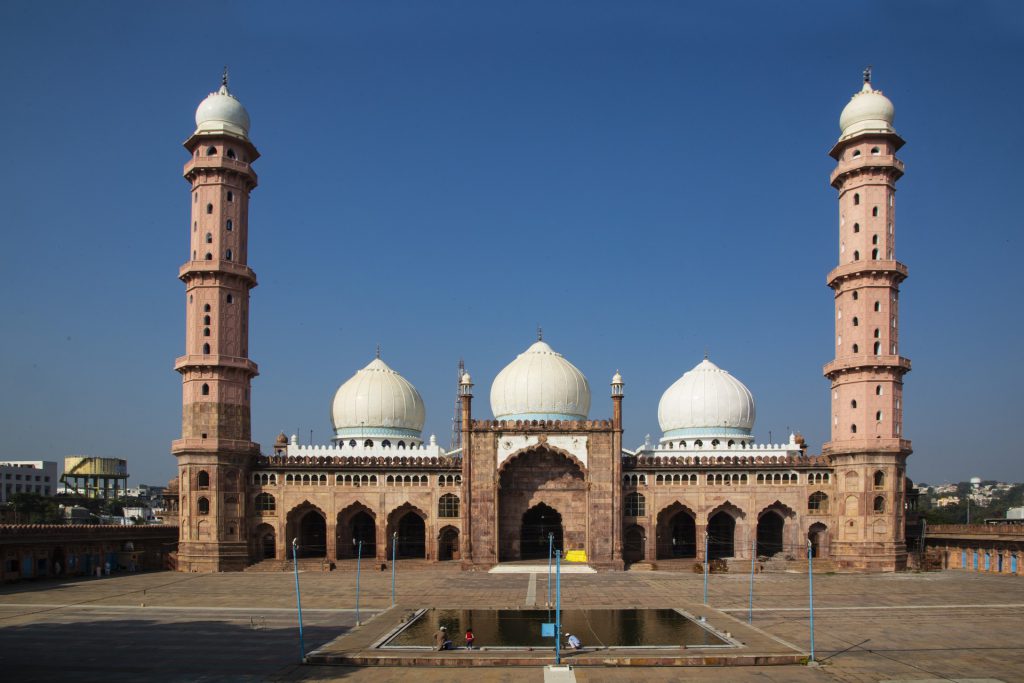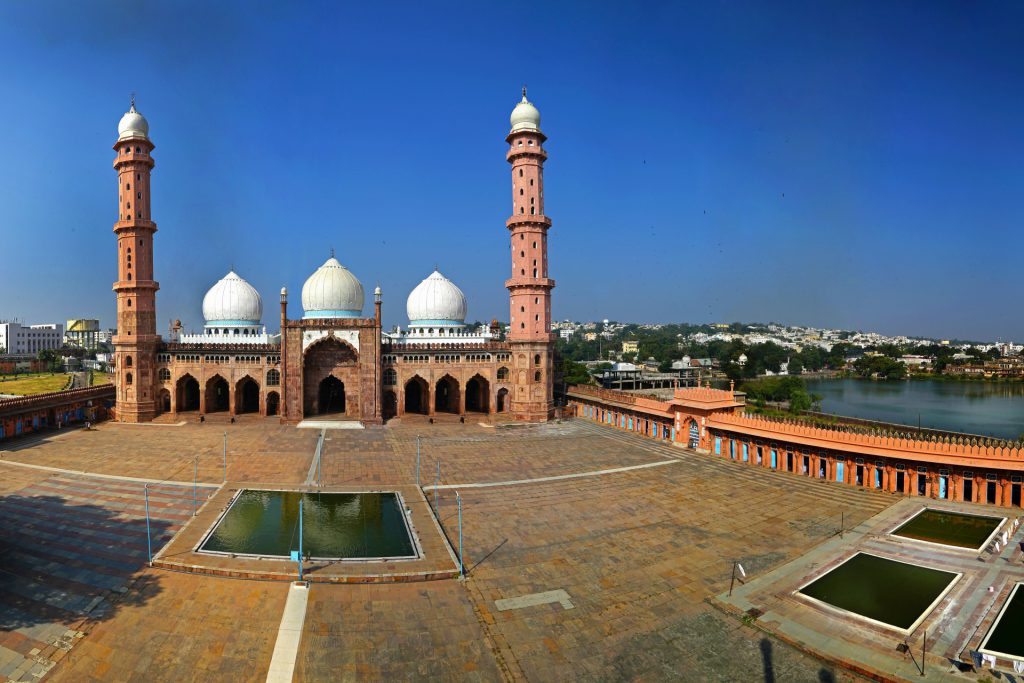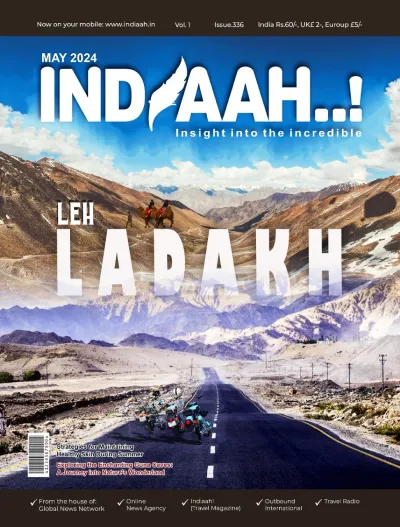
Living up to its name, the Taj-Ul-Masajid in Bhopal, India’s largest mosque,
truly stands as a jewel in the crown of Islamic architecture. A magnificent
example of Mughal design, the mosque boasts a captivating pink exterior built
from red sandstone. Three stark white domes grace the rooftop, while two tall
minarets, each topped with a matching white dome, stand guard on either
side. The entire complex is enclosed within a rectangular, walled structure that
features a large, open courtyard and a central water tank.
The sheer scale of the Taj-Ul-Masajid is awe-inspiring. Spanning a massive
430,000 square feet, its expansive grounds offer space for up to 175,000
worshippers to gather for prayer. The design itself draws inspiration from
historical Syrian mosques, with influences of the Emir of Kuwait’s
commissioned mosques built in memory of his wife. The mosque also bears a
striking resemblance to Delhi’s famous Jama Masjid, particularly in its interior
design and intricate details.

Stepping inside, the red sandstone construction takes on a stunning pinkish
hue, further accentuated by the white domes crowning the massive facade.
Flanking the corners are white marble domed minarets. Arched entrances lead
to the main monument and a serene courtyard with a central water tank used
for Wudu, the ritual purification Muslims perform before prayer involving
washing the face, hands, arms, and feet.
The main hallway boasts a magnificent marble floor, adorned with decorative
screens showcasing beautiful artwork. Eleven arches lead to the Qibla wall,
renowned for its grand pillars reaching the ceilings, which are elaborately
designed with petal motifs. The Moti Talab lake lies adjacent to the mosque,
adding to the tranquil atmosphere.
A Rich History
The architectural marvel of the Taj-Ul-Masajid is matched by its fascinating
history, dating back over a century. Construction began in 1887, a time when
Mughal-inspired architecture flourished throughout India.
Shah Jahan Begum, the female ruler of Bhopal, commissioned the Taj-Ul-
Masajid in 1887 to serve and promote Islam. Her daughter continued the work
after her passing, but due to a lack of funds, construction remained unfinished
for many years.
Exploring the Mosque
The main prayer hall, built with red stone, is a masterpiece. The room is
adorned with elaborate floral motifs and bookshelves lining the pillars. The
eastern gate, renovated during a later phase, now serves as the main entrance.
The Emir of Kuwait gifted the gate with antique designs from Syrian mosques
dating back to around 1250 AD.
Planning Your Visit
The Madhya Pradesh Tourism Board actively promotes this unique destination,
ensuring every visitor has the opportunity to witness its wonders.
Getting There:
Nearest Airport: Raja Bhoj Airport, Bhopal. Cabs are readily available to reach
the mosque from the airport. The airport is well-connected to major cities like
Delhi, Mumbai, Indore, and Gwalior.
The Nearest Railway Station: is Bhopal Junction. Bhopal Junction offers
excellent connections to major Indian cities, including daily Shatabdi Express
trains between Bhopal and Delhi.


